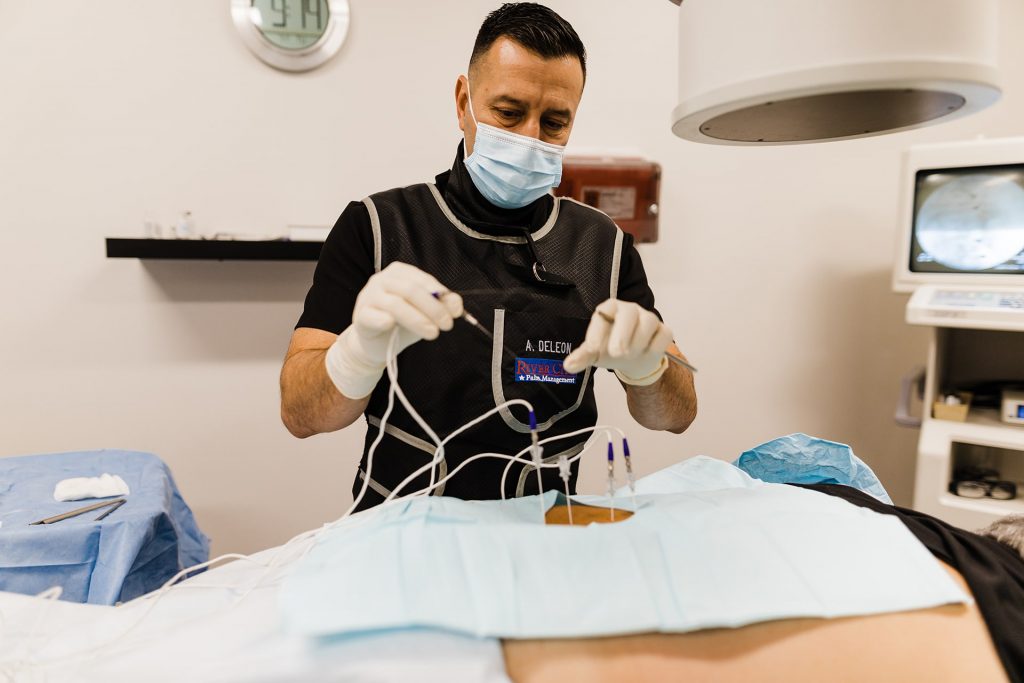- Kyphoplasties
Who is a candidate for a Kyphoplasty?
You are eligible for the procedure if you suffer from:
- painful vertebral fractures caused by osteoporosis
- bone marrow cancer
- metastatic cancer
- or benign vascular tumors
If you or one of your loved ones suffers from acute or chronic pain,
please do not hesitate to call us. We can help!
What is a compression fracture?
Compression fractures are most often associated with osteoporosis, which is a condition that causes your bones to lose density, robbing them of their structural integrity. When it comes to your vertebrae, the weakening in the bones causes them to collapse inward, which leads to an increasing hunch in your back, pain, and a loss of vertebral height of more than 15-20%.
While compression fractures can develop in any one of your 33 vertebrae, they most often occur in your upper back, or thoracic region.
Outside of osteoporosis, compression fractures can develop after cancer treatments that weaken your bones or they can also be the result of acute trauma or injury.
What is kyphoplasty?
To restore height to your vertebra, which also reduces your hunch as well as relieve your pain, your physician turns to an innovative procedure called a kyphoplasty. During the procedure, your physician first ensures your comfort by administering a local or general anesthetic. Once you’re ready, your physician uses fluoroscopy, or X-ray guidance, to insert a needle equipped with a balloon into your collapsed vertebra. After the balloon is in place, your physician inflates it to restore height to your vertebra.
Once your vertebra is held in the right position with the balloon, your physician injects a special cement into the space and removes the needle. If your physician is fixing one vertebra, the entire procedure takes only an hour. If they are performing kyphoplasty on more than one vertebra, you should count on it taking more time.
What is recovery like after kyphoplasty?
Immediately after your kyphoplasty, your physician checks to make sure that you’re feeling well enough to go, at which point someone can take you home. While you can walk after this procedure, you should plan on taking it easy for a few days. You may feel some soreness where the needle went in, but this generally resolves itself quickly and is often overshadowed by the relief you feel with your vertebra restored to its original height.
Your physician supplies you with complete aftercare instructions that detail what you can and can’t do during your recovery period. They may also want to see you for a follow-up visit, at which time they can greenlight you for more strenuous activities.
To find out whether you’re a good candidate for kyphoplasty, call River City Pain Management or schedule an appointment online today.
With our experience, you’re in good hands.



